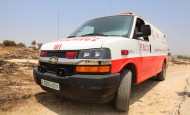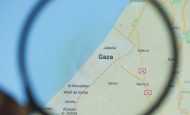Hamas Exploitation of Hospitals for Hostage Taking: The Legal Imperative to Investigate Aiding and Abetting of War Crimes
Abstract
As Israel’s operations in Gaza continue into their fourth month and freed hostages provide accounts of their time in captivity, evidence continues to emerge that Hamas exploited civilian infrastructure, including hospitals, for the taking of more than 240 hostages from Israel during the 7 October onslaught and massacre.
Hospitals have been a particularly favored location for Hamas to embed fighters, store weapons, engage in combat, and torture political adversaries. This infrastructure capture by Hamas not only endangered civilians seeking medical treatment, but placed at risk all of those working at the hospitals regardless of their affiliation to Hamas. Beginning in 2009, reports surfaced about Hamas use of Gazan hospitals and their grounds as repeated locations for its military activities. Examples include the Indonesian hospital, the Al-Rantisi hospital, and most notoriously, the Al-Shifa hospital in Gaza City. The former head of USAID for Gaza reported that ‘it was broadly suspected/understood as far back as 2014 that Hamas used the Al-Shifa Hospital complex as a command center and base for operations.’ A Dutch journalist recounted that he personally saw fighters at Al-Shifa and that ‘Everyone in Gaza including UN staff knows about the dual use of these facilities.’ Former hostages have told how they were brought into and hidden within and under hospitals. A released teenage hostage recounted how she was held alongside another hostage in a hospital, and that he died during his captivity there.
In one of the more shocking examples, released CCTV footage showed two hostages (Thai and Nepali nationals) taken from Israel and being brought into Al-Shifa hospital. They are surrounded by a group of men, some armed, while individuals dressed in scrubs look on. In one frame, others in scrubs direct the kidnappers and usher one of the hostages on a gurney into a room. The date and time stamp indicates these events took place in the late morning of 7 October.
If verified, the CCTV footage, coupled with hostage accounts and other evidence of hostage presence at hospitals, demonstrate serious criminal offenses. The video shows armed combatants bringing hostages into a hospital, a place with protected legal status. It would provide evidence that hostages kidnapped from Israel were present in Al-Shifa as early as the morning of October 7, and individuals in scrubs (potentially members of hospital staff) were aware of this presence. It is also reasonable to consider that these individuals may have possessed other salient knowledge, including the hostages’ medical condition, identity of their captors, and location of captivity. In addition to the implications for the individual health and safety of those abducted, this information would be vital to authorities looking to rescue and release the hostages, to international organisations, such as the ICRC, looking to make contact with them, and to the families desperate for knowledge of their condition. This information could also have been, and remains critical, to the scale, scope, location, and duration of the conflict in Gaza as the release of all hostages is one of the two primary objectives of Israel’s military campaign. It is unknown whether and to what extent hospital staff were involved in administering to the hostages, helped to conceal them, or were involved in physically harming them.
This article argues for the legal imperative to open investigations regarding the presence of hostages at Gaza’s medical facilities, and whether those who assisted in or were aware of this presence bear responsibility for international crimes associated with the taking of hostages on the basis of aiding and abetting such crimes, through facilitating such acts, and/or by withholding information regarding the presence and status of hostages.


